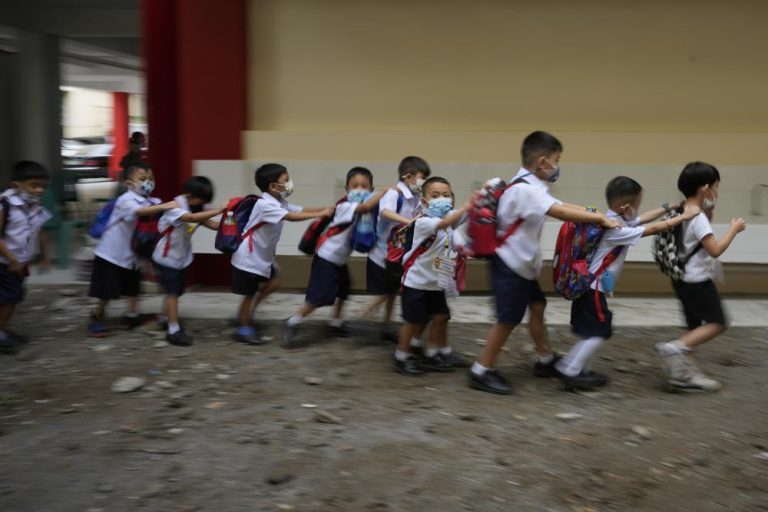
Philippines (AP) — Millions of students wearing face masks streamed back to primary and secondary schools across the Philippines Monday in their first in-person classes after two years of coronavirus lockdowns that are feared to have worsened one of the world’s most alarming illiteracy rates among children.
Officials grappled with daunting problems, including classroom shortages, lingering COVID-19 fears, an approaching storm and quake-damaged school buildings in the country’s north, to welcome back many of more than 27 million students who enrolled for the school year.
Only more than 24,000 of the nation’s public schools, or about 46%, would be able to open in-person classes five times a week starting Monday, while the rest would still resort to a mix of in-person and online classes until Nov. 2, when all public and private schools are required to bring all students back to classrooms, education officials said.About 1,000 schools will be unable to shift to face-to-face classes entirely during the transition period ending on Nov. 2 for various reasons, including damages to school building wrought by a powerful earthquake last month in the north, officials said.
The Department of Education said some schools would have to split classes up to three shifts a day due to classroom shortages, a longstanding problem, and to avoid overcrowding that could turn schools into new epicenters of coronavirus outbreaks.“We always say that our goal is maximum of two shifts only but there will be areas that would have to resort to three shifts because they’re really overcrowded,” Education Department spokesperson Michael Poa said Friday at a news conference. Despite many concerns, education officials gave assurances that it’s “all-systems go” for Monday’s resumption of classes, he said.
Sen. Joel Villanueva, however, said such assurances have to be matched by real improvements on the ground.
“The era of missing classrooms, sharing tables and chairs and holding classes under the shade of trees must no longer happen,” said Villanueva, who filed two bills calling for additional grocery, transportation and medical allowances for public school teachers.
Among the worst-hit by the pandemic in Southeast Asia, the Philippines under then-President Rodrigo Duterte enforced one of the world’s longest coronavirus lockdowns and school closures. Duterte, whose six-year term ended June 30, had turned down calls for reopening in-person classes due to fears it might ignite new outbreaks.






